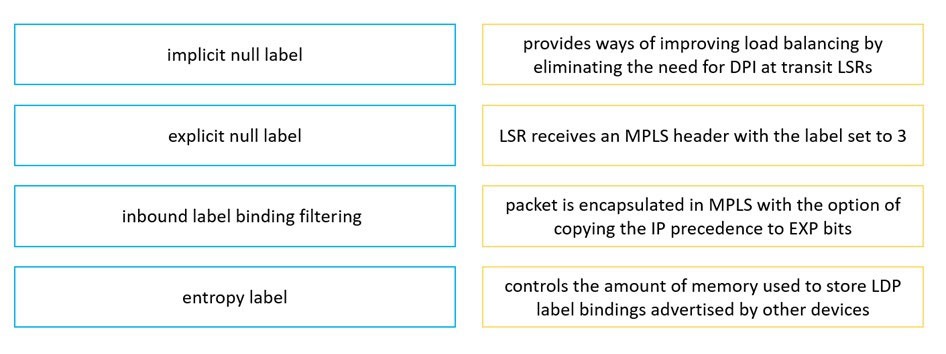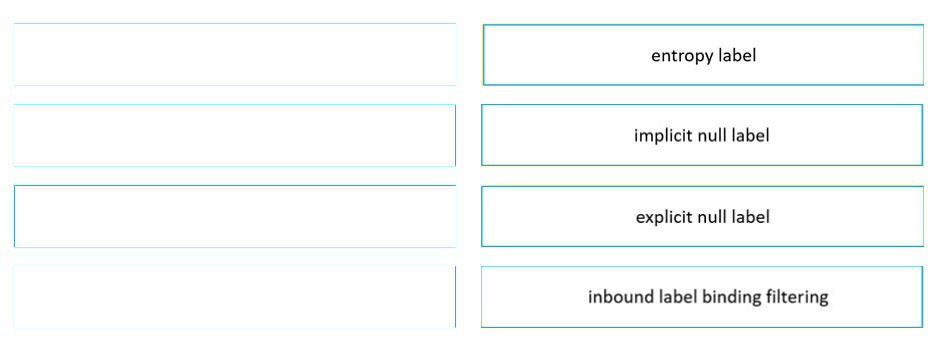DRAG DROP -
Drag and drop the LDP features from the left onto the descriptions on the right.
Select and Place:

DRAG DROP -
Drag and drop the LDP features from the left onto the descriptions on the right.
Select and Place:


Correct. https://www.cisco.com/c/en/us/td/docs/ios-xml/ios/mp_ldp/configuration/xe-16-6/mp-ldp-xe-16-6-book/mp-ldp-inbound-filtr.html https://www.cisco.com/c/en/us/td/docs/ios-xml/ios/mp_ldp/configuration/xe-16/mp-ldp-xe-16-book/mp-ldp-entropy.html https://www.ipspace.net/kb/tag/MPLS/Implicit_Explicit_NULL.html
Provides ways of improving load balancing by eliminating the need for DPI at transit LSRs LSRs receives an MPLS header with the label set to 3 Packets is encapsulated in MPLS with the option of copying the IP priority copied to the EXP bit Controls the amount of memory used to store LDP label bindings advertised by other devices
In my opinion is the explanation about implicit and explicit NOT correct or really badly written. Explicit null>> MPLS label is popped by next-to-last LSR and "normal" IP packet get's forwarded to last LSR (egress LSR) Implicit null label: MPLS label is not taken of by next-to-last LSR, this retains MPLS EXP (QOS bits) so they can still be used by egress LSR
The value "Implicit NULL Label == 3" will only be communicated by egress LSR by LDP. When encapsulation takes place on the next-to-last LSR knows it can pop entire MPLS header as it previously has received the "implicit null value of 3 by means of LDP". Above does mean that "LSR receives an MPLS header with the label set to 3" is actually incorrect.
My first entry was incorrect, see below for the correct text Implicit null>> MPLS label is popped by next-to-last LSR and "normal" IP packet get's forwarded to last LSR (egress LSR) Explicit null label: MPLS label is not taken of by next-to-last LSR, this retains MPLS EXP (QOS bits) so they can still be used by egress LSR More info: https://www.networkworld.com/article/912436/cisco-subnet-understanding-mpls-explicit-and-implicit-null-labels.html https://community.cisco.com/t5/mpls/implicit-null-and-explicit-null/td-p/1496792
correct